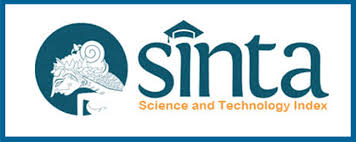Perbedaan Bahasa Indonesia dan Bahasa Minang Antara Pria dan Wanita
DOI:
https://doi.org/10.36057/jilp.v7i2.668Keywords:
Sosiolinguistik, Bahasa Indonesia, Bahasa MinangAbstract
Language is a verbal communication tool. Humans use language to communicate with each other. Language, like other social behavior, also accommodates gender differences. This research aims to analyze the language commonly used by male and female speakers of Indonesian and Minang in everyday life. The respondents were UPI 'YPTK' Padang undergraduate students. The data collected is in the form of words or texts which are then processed and presented in descriptive form. The collected data is then categorized and analyzed. From observations it can be seen that the language of men and women is different in several aspects, including in the choice of topics, vocabulary and grammar. These vocabulary differences include the use of adjectives, adverbs, enhancers, and the color of certain words. Meanwhile, in grammar, the difference lies in the use of question tags, hedges, and hyper correct grammar.
Downloads
References
Amir, K., Azisah, St. (2017). Gender Analysis On Slang Language In Students Daily Conversation. ETERNAL (English, Teaching, Learning and Research Journal), Vol 3(2), 229-243.
Amri, Zul. (2009). Perbedaan Bahasa Siswa Laki-Laki Dan Siswa Perempuan: Sebuah Studi Kasus Di Kelas V Sdn 09 Air Tawar Barat Padang Sumatera Barat. Lingua Didaktika Vol. 3(1), 96-110.
Coulmas, Florian. (2005). Sociolinguistics, The Study of Speakers’ Choices. New York : Cambridge University Press
Hidayat, R.S. (2004). Penulisan dan Gender. Makara Sosial Humaniora, Vol. 8(1), 9-15.
Holmes, J. (2001). An Introduction to Sociolinguistics. 2nd ed. Edinburgh: Person Education Limited.
Jesperson, O. (1949). Language. New York: Macmillan.
Lakoff, R. (1975). Language and Woman's Place. New York: Harper and Row.
Li, J. (2014). A Sociolinguistic Study of Language and Gender in Desperate Housewives. Theory and Practice in Language Studies, 4 (1), 52-57.
Pan, Qi. (2011). On the Features of Female Language in English. Theory and Practice in Language Studies, Vol.1(8), 1015-1018.
Schiffrin, Deborah. (1994). Approaches to Discourse. Massachusetts – Oxford: Balckwell Publishers.
Wardaugh, R. (2010). An Introduction to Sociolinguistics. Oxford : Blackwell Publisher Ltd
Zulkarnain, S. I., Fitriani, N. (2018). Perbedaan Gaya Bahasa Laki-Laki Dan Perempuan Pada Penutur Bahasa Indonesia Dan Aceh. Gender Equality: Internasional Journal of Child and Gender Studies, Vol. 4(1), 159-171
Downloads
Published
How to Cite
Issue
Section
License
Copyright (c) 2024 Jurnal Ilmiah Langue and Parole

This work is licensed under a Creative Commons Attribution-NonCommercial-ShareAlike 4.0 International License.








